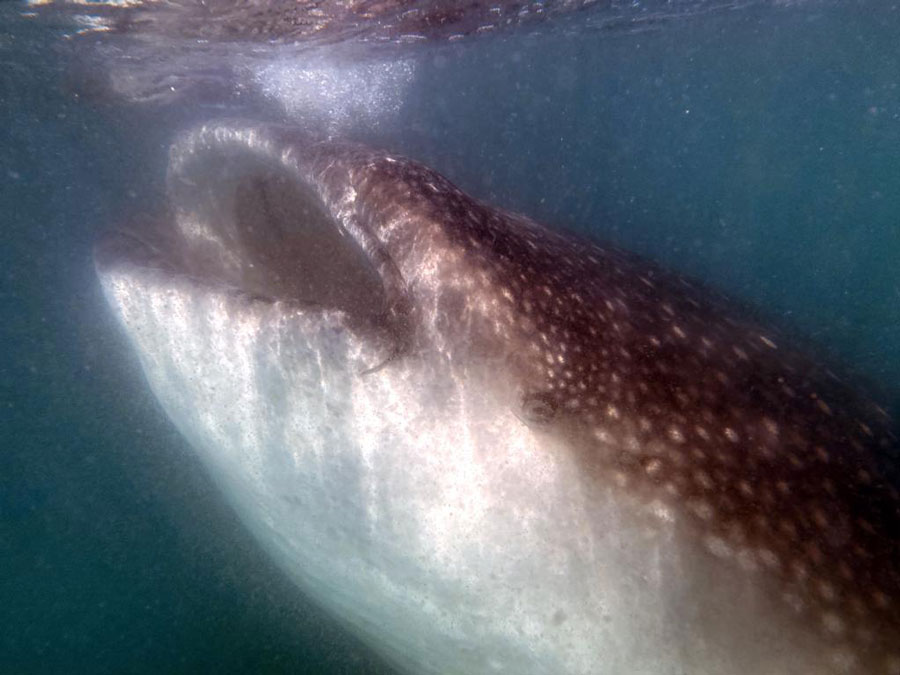One of my Patreon supporters had an experience with an almost panicked diver in very low visibility, and asked me to share tips for how to handle this situation. Low visibility adds a layer of complexity to the standard rescue skills, so let’s get into it.
Prevention
Being a proactive dive buddy means solving stressors before they become full-blown emergencies. This is what you learn and practice in any rescue course, but it’s even more important when diving in less than ideal conditions. Prevention methods include doing proper equipment checks and dive briefings with your buddy or dive team. If you are diving with new people, I recommend you check out my video on how to dive with strangers for safety tips and questions.
Signs that someone may be on their way to being a panicked diver in the water:
- Obsessively checking and re-checking their dive equipment
- Change in normal behavior–Talking too much or not talking at all
- Showing discomfort while talking through the dive plan
Now, seeing these signs in people doesn’t mean you have to cancel a dive. If we never take people who are nervous to dive, there wouldn’t be too many divers in the world. What it does mean is, as a rescue diver, you should be assessing your comfort with the conditions and the plan. Do you feel capable of handling a situation, should it arise?
Have a thorough briefing with your buddy or dive team. Talk about the conditions and what you could expect during the dive. In places where low visibility is expected, I include an explanation and demonstration of close contact or tactile signals.
Low visibility contact and signals can include:
- Lights. Use bright lights to signal and keep track of one another
- Close to the mask communications (same visual signals, just shown to each other in front of the face)
- Arm squeezes (for example, one squeeze could be, “Are you ok?” With a one-squeeze response for, “Yes, I’m ok.”
- Swimming with contact. Some people will link arms, but I recommend having the person on the left side keep contact with their buddy on the right by holding on to a piece of their BCD. This gives each buddy the range to work their BCD and buoyancy while still maintaining buddy contact.
Self-rescue
It’s the old adage, put on your oxygen mask before helping others. We have to make sure we are safe and level-headed before jumping into any kind of rescue. If we don’t, we could be adding to the body count of the emergency.
Ways to prepare yourself:
- Have a relaxation/meditation practice on land. You can learn with me on Patreon! Practicing clearing the mind and slowing down the breath outside of the water will have positive effects on all aspects of your diving. Not only will you improve your air consumption, but you will have an easier time making decisions when stress is high.
- Practice rescue skills regularly. Loads of dive communities put on rescue refresh days where you can practice the basic skills. If no one does that in your area, grab some buddies and start one yourself.
- Pause. Take a deep breath. Even when faced with the most stressful situation, pausing for just a moment to center yourself before acting will trigger that meditation practice you’ve worked on.
Buddy rescue
If visibility is so bad that visual communication is impossible and it’s unlikely to clear up by going deeper or in another direction, feel free to cancel the dive and get to the surface.
Now, if your buddy is simply stressed and not panicked you’ll usually see them breathing a lot and/or have big, buggy eyes, but not making erratic moves underwater. In this case, calmly make contact, try to look them in the eyes and tell them to slow down their breath. If they can calm down, they have enough air, and the dive is worth continuing, you may move on with the dive. If they can’t calm down or are low on air, take control of the situation by maintaining contact wherever their deflate points are on their BCD or drysuit and slowly make the ascent.
As for a full on panicked diver: remember to take care of yourself. Someone who is panicked will not respond with logic or reason. They may fight you. They may shoot for the surface. In this case, of course it is nice to try to slow them down by grabbing their legs, but ultimately a panicked diver will overpower you regardless of their size. Sometimes you just have to let them panic until they wear themselves out enough so that you can help. Your safety as the rescue diver is the priority.
Whenever you make it to the surface, alert other divers in the area that you have a panicked diver in the water. There may be someone who can support you in the rescue, especially if things get worse.
Buddy separation
There are two responses at this point: You can see bubbles breaking at the surface or not.
If there are bubbles, then you have a diver that is swimming around lost. Get on top of their bubbles and descend using their bubbles as your guide. When you find them, make contact from the side or behind so you have some protection and do your best to get them to the surface.
If there are no bubbles, either the water movement is making it impossible to see, or your buddy has stopped breathing. This is why it’s important to call for help at the first chance you get because in this case, you should get a buddy to effectively run a search pattern appropriate for the conditions and topography. If you want a refresher on search patterns, check out this video.
Let’s talk about worst case if you’re in the no bubbles situation: you’re alone. If I’ve lost my buddy in low visibility and I can’t see bubbles at the surface, I’m getting to shore and calling for help. By myself, I am not an effective rescue team for searching for a body, so I want to get backup to the dive site as soon as possible.
Debrief the dive
An important part of learning from these kinds of incidents is to take the time to talk about what happened with no judgement or jokes. Keep it simple. Keep it kind. Reassure the panicked diver and give suggestions to avoid a similar situation in the future. Share your experiences with feeling panicked so they don’t feel alone or embarrassed.
Finally, my biggest piece of advice, encourage the panicked diver to get in the water again as soon as possible. It may not be appropriate to dive again that day, but it’s important that they don’t let that incident fester and become a steadfast fear in their heart. Offer to go with them. Plant a seed of confidence and camaraderie.
Join me on upcoming Azul Unlimited dive expeditions
See what trips are coming up. I always give my community first dibs on spots, so you can sign up for Patreon (and get trip discounts) or my email list to be the first to know about new expeditions in the future.










